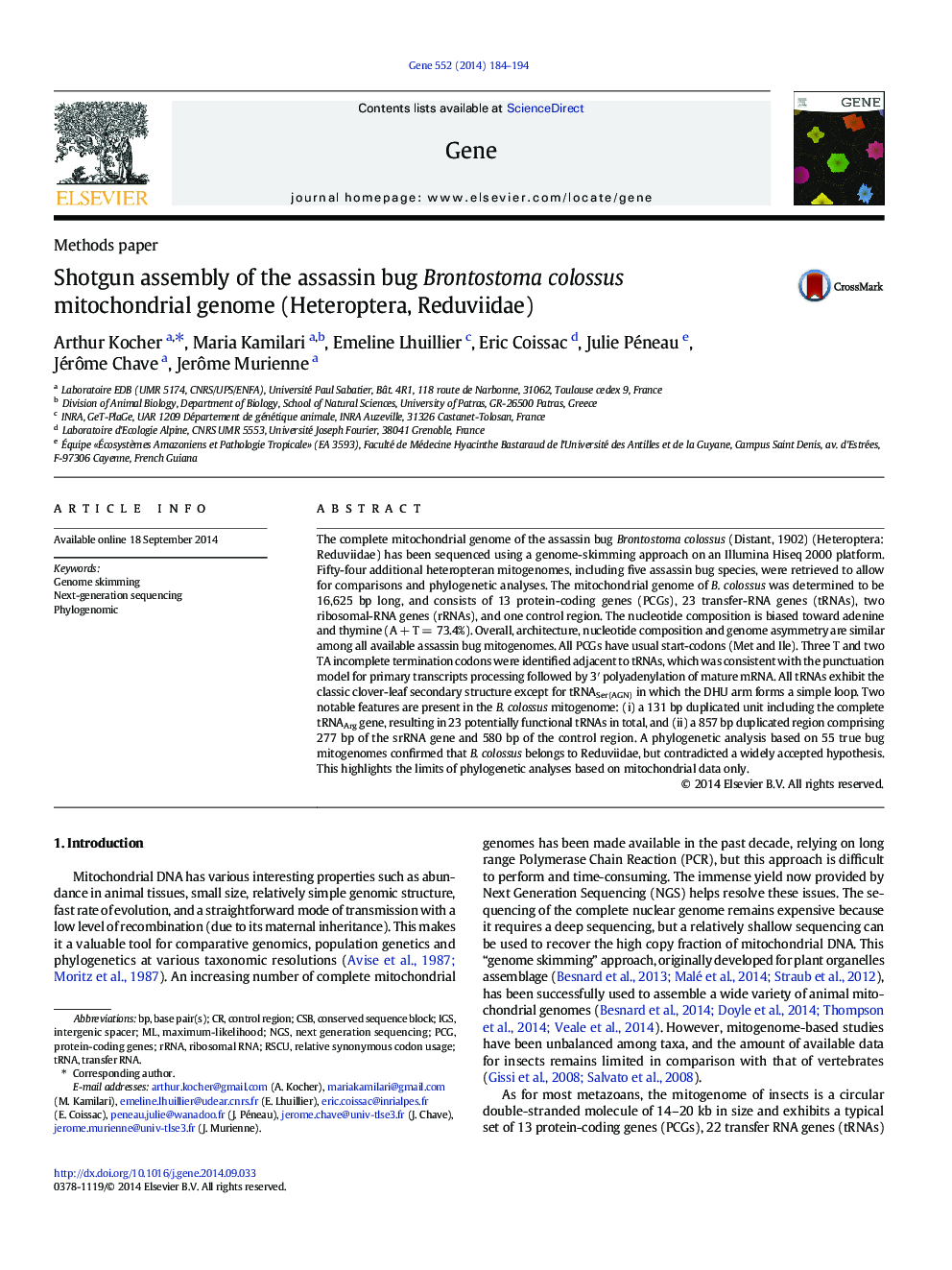| Article ID | Journal | Published Year | Pages | File Type |
|---|---|---|---|---|
| 2816134 | Gene | 2014 | 11 Pages |
•We sequenced the mitogenome of Brontostoma colossus with a genome-skimming approach.•We also retrieved the complete nuclear ribosomal gene cluster.•A duplicated tRNAArg was found resulting in a set of 23 tRNAs in total.•An 877-bp duplicated element was indentified in the control region.•Our phylogenetic results highlight the limits of analyses based on mitogenomes only.
The complete mitochondrial genome of the assassin bug Brontostoma colossus (Distant, 1902) (Heteroptera: Reduviidae) has been sequenced using a genome-skimming approach on an Illumina Hiseq 2000 platform. Fifty-four additional heteropteran mitogenomes, including five assassin bug species, were retrieved to allow for comparisons and phylogenetic analyses. The mitochondrial genome of B. colossus was determined to be 16,625 bp long, and consists of 13 protein-coding genes (PCGs), 23 transfer-RNA genes (tRNAs), two ribosomal-RNA genes (rRNAs), and one control region. The nucleotide composition is biased toward adenine and thymine (A + T = 73.4%). Overall, architecture, nucleotide composition and genome asymmetry are similar among all available assassin bug mitogenomes. All PCGs have usual start-codons (Met and Ile). Three T and two TA incomplete termination codons were identified adjacent to tRNAs, which was consistent with the punctuation model for primary transcripts processing followed by 3′ polyadenylation of mature mRNA. All tRNAs exhibit the classic clover-leaf secondary structure except for tRNASer(AGN) in which the DHU arm forms a simple loop. Two notable features are present in the B. colossus mitogenome: (i) a 131 bp duplicated unit including the complete tRNAArg gene, resulting in 23 potentially functional tRNAs in total, and (ii) a 857 bp duplicated region comprising 277 bp of the srRNA gene and 580 bp of the control region. A phylogenetic analysis based on 55 true bug mitogenomes confirmed that B. colossus belongs to Reduviidae, but contradicted a widely accepted hypothesis. This highlights the limits of phylogenetic analyses based on mitochondrial data only.
Graphical abstractFigure optionsDownload full-size imageDownload high-quality image (183 K)Download as PowerPoint slide
